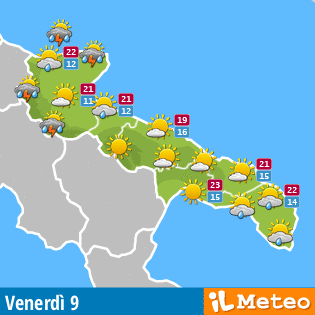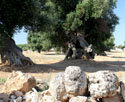San Giovanni Rotondo
Info San G. Rotondo
-
Region:
Provincie:
Municipality:
CAP:
Area code:
Surface:
Population:
city hall:
-
Apulia
Foggia
San Giovanni Rotondo
71013
0882
261,88 Kmq
27.506
Piazza Dei Martiri 5
The story of this city is deeply linked with that of Father Pio from Pietrelcina
San Giovanni Rotondo lies in a valley, 600 metres in height, in the Gargano promontory and it is famous all over the world thanks to the charismatic Saint Pio from Pietrelcina, who draws thousands of believers.
San Giovanni Rotondo dates back to the 11th century when in a little village stood a round baptistery dedicated to San Giovanni, probably built on a previous temple dedicated to Giano. In the old town centre it is possible to visit the medieval church of Sant’Onofrio.
Nowadays the town is visited by a huge number of pilgrims devoted to Father Pio from Pietrelcina, recently declared a saint. The modern history of the town is deeply linked with the shrine of the friar with the stigmata, who spent here the greatest part of his life; he arrived in San Giovanni in 1916 and died here on the 23rd September 1968.
The new big shrine dedicated to Saint Pio has a big impact on the town view; it has been planned by the architect Renzo Piano and accommodates thousands of people. It has a surface of 6000 square meters and it is the second largest church in Italy after the Milan cathedral.
The church, consecrated in 2004 with a solemn celebration, has a spiral shape whose centre is the altar. The wide church courtyard, made of Apricena stone, joins the old shrine of Santa Maria della Grazie with the new one: they are ideally linked through a huge glass wall.














